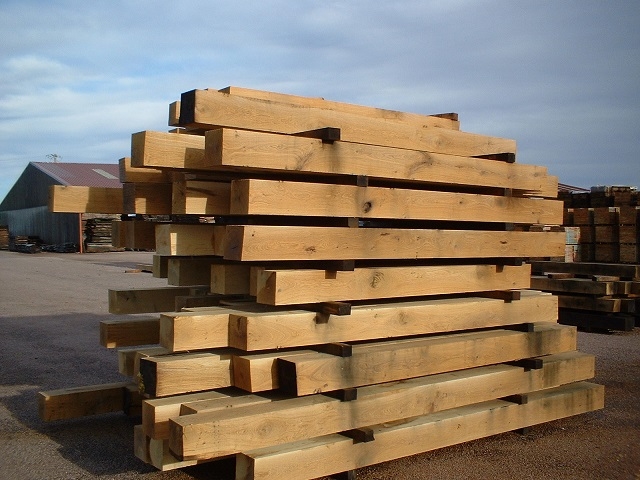Published: 15/09/25 By: Mike Bekin
Oak beams are the traditional go-to in British construction. Strong, durable and packed with character, they are one of the best choices for everything from vaulted ceilings to timber-framed new builds. But after choosing your Oak timber beams, there comes another question: how will you join them together?
When exploring options, there are two main ways to go: traditional joints and modern connectors. In this guide, we will take a closer look at both so you can get a grasp on their similarities, differences, and which one is the perfect pick for your project.
Traditional Oak Beam Joints
If you have ever walked into a medieval hall or a Tudor cottage and looked up, you will have seen tons of traditional timber jointing. These time-honoured joints, such as mortise and tenon, dovetails and lap joints, have been used for hundreds of years, and they are still going strong today.
Traditional joints rely on skilled carpentry and precise cutting. They are designed to lock beams together using their own shapes, often secured with Oak pegs rather than metal fixings. Think of it sort of like turning your individual beams into puzzle pieces which slot together to form a larger construction.
Pros of Traditional Joints
Traditional joints are typically viewed as the more beautiful of the two options. With no visible metalwork and a timeless, authentic look, they are perfect for heritage or listed buildings where conservation is key. They are also incredibly strong and designed to move with the timber, creating a long-lasting structure.
What to Consider
On the surface, we would recommend traditional joints simply for their aesthetic appeal and strength. However, traditional jointing is labour-intensive and requires a skilled hand. This means you either will have to be an experienced carpenter or hire someone who is, and potentially spend a little more for the work.
Modern Oak Beam Connectors
Fast forward a few centuries and you will find a whole range of metal connectors designed to join Oak beams quickly and securely. From stainless steel plates and bolts to concealed brackets and joist hangers, modern connectors are all about speed, strength and simplicity.
While these might not have the charm of traditional joints, they are certainly a practical choice. With a bit of care and attention to detail, your end result can still look sleek and polished.
Pros of Modern Connectors
Simply put, modern connectors are quicker and cheaper. If you are working to tight deadlines and do not have the time or budget for expert joinery, they are a great solution which will get the job done. You can also opt for hidden modern connectors which will keep your beams looking their best for a clean, high-quality finish.
What to Consider
The main disadvantage of modern connectors is that they are not traditional and can, sometimes, be visible. This is not great for conservation projects and heritage buildings. If you are working with clients, it is best to check with them before going ahead with modern connectors to ensure they are okay with the appearance.
Traditional or Modern: Which Is Right For Your Project?
Ultimately it comes down to the look you are after, your budget and the purpose of the structure.
If you want to showcase traditional craftsmanship and your beams are a central visual feature, traditional joints are a great choice. If speed, strength and practicality are your top priorities – especially in hidden structural areas – modern connectors offer a no-fuss solution.
Remember that you do not always have to choose one over the other. Many builds combine both approaches, using traditional joints where they are on show and modern fixings where they are hidden from view.
Need Help Deciding?
At EcoChoice, we are timber experts. We have been supplying sustainable timber beams from responsibly managed forests for years.
Haven’t ordered your timber beams yet? We have got you covered. Reach out to learn more about joints and start an order today.
